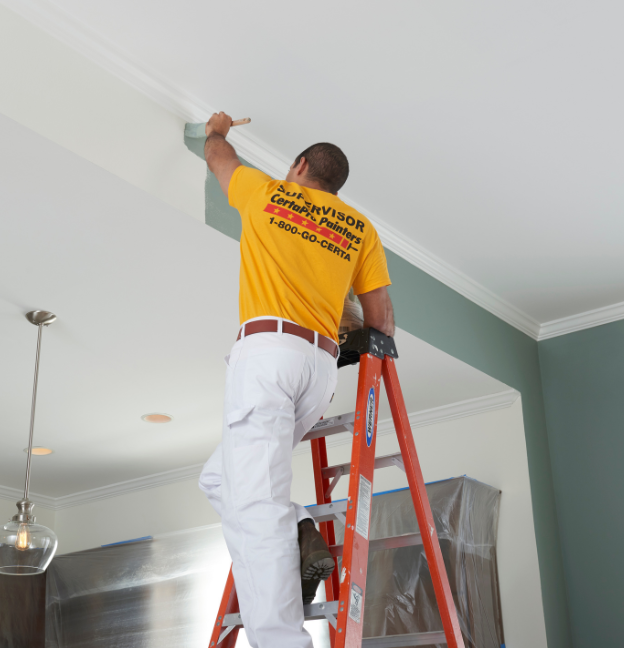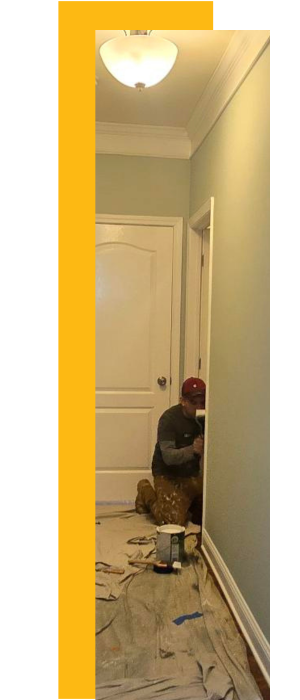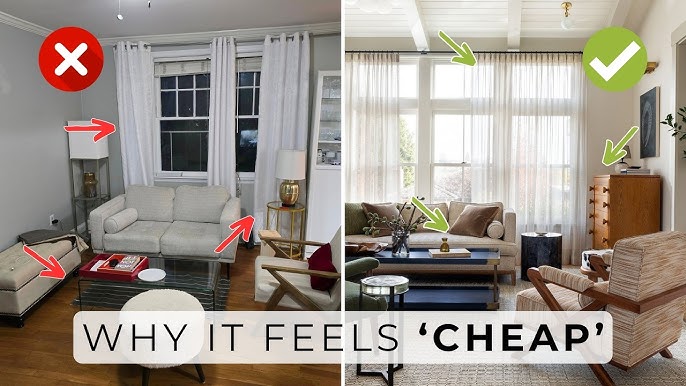You just finished painting your room, and it looks great. But now you face an important question: how long should you ventilate the room after painting?
This step is more than just opening a window—it affects your health, comfort, and how soon you can enjoy your fresh space. If you don’t ventilate properly, those strong paint fumes can linger longer than you think, causing headaches, dizziness, or worse.
Keep reading, and you’ll discover simple, effective tips to clear the air quickly and safely. Your well-being and your beautiful room both depend on it.
Importance Of Room Ventilation
Ventilating a room after painting is very important for safety and comfort. Paint releases fumes that can stay in the air for hours or days. Proper airflow helps remove these harmful chemicals. It also speeds up drying and reduces odors. Good ventilation makes the space safer to use sooner.
Health Risks Of Paint Fumes
Paint fumes contain chemicals that can harm your health. Breathing in these fumes may cause headaches, dizziness, and nausea. Some people might feel irritated eyes, nose, or throat. Long exposure to strong fumes can lead to more serious problems like breathing trouble. Children, elderly, and people with asthma are at higher risk.
Impact On Indoor Air Quality
Paint fumes reduce indoor air quality. These chemicals can mix with dust and other pollutants. Poor air quality can make the room feel stuffy and unpleasant. It can also cause allergies and worsen breathing issues. Proper ventilation removes these toxins and brings in fresh air. This helps keep the air clean and safe to breathe.
Factors Affecting Ventilation Time
Ventilation time after painting varies due to several key factors. Understanding these helps you know how long to keep windows open. Proper ventilation removes harmful fumes and speeds drying. These factors influence how fast fresh air replaces the paint odors and chemicals.
Type Of Paint Used
Paints have different drying times and fumes. Oil-based paints release more strong odors and chemicals. They need longer ventilation, sometimes up to 48 hours or more. Water-based or latex paints dry faster and have milder smells. Usually, they require less ventilation time, often 2 to 6 hours.
Room Size And Layout
Small rooms trap paint fumes more easily. They need longer ventilation for fresh air to clear the space. Large rooms allow quicker air circulation, reducing ventilation time. Rooms with many corners or closed spaces slow down airflow. Open layouts help air move freely and clear odors faster.
Weather And Airflow Conditions
Warm, dry weather helps paint dry fast and fumes fade quicker. Cold or humid conditions slow down drying and ventilation. Good airflow through windows and doors speeds up fresh air exchange. Using fans or vents can improve airflow and reduce ventilation time significantly.
Recommended Ventilation Duration
Fresh air should flow through the room for at least 2 to 3 days after painting. Proper ventilation helps remove paint fumes and speeds up drying. Keep windows and doors open to ensure good airflow during this time.
Recommended Ventilation Duration Ventilating your room after painting is crucial for removing fumes and ensuring your health and safety. But how long should you ventilate your room? The answer depends on the type of paint you used.Water-based Paints
Water-based paints are a popular choice for painting projects. They are generally safer to use and have lower VOCs (volatile organic compounds) compared to oil-based paints. However, they still require proper ventilation. You should ventilate your room for at least 24 to 48 hours after painting with water-based paints. Open windows and doors to allow fresh air to enter, and consider using fans to speed up the process.Oil-based Paints
Oil-based paints, on the other hand, are known for their strong fumes. They require longer ventilation times, typically 3 to 7 days. These paints contain solvents that can cause headaches and other health issues if inhaled. When painting with oil-based paints, make sure to use a well-ventilated area, and consider wearing a mask to protect yourself from fumes.Low-voc And No-voc Paints
Low-VOC and no-VOC paints are a great option for those who want to minimize their impact on the environment. These paints are formulated to have lower or no VOCs, making them a safer choice for indoor painting projects. However, they still require some ventilation, typically 1 to 2 hours. While these paints are a healthier option, it’s essential to follow the manufacturer’s instructions for ventilation times. Additional Tips Always follow the manufacturer’s instructions for ventilation times and any specific recommendations for the type of paint you used. Consider using a fan to speed up the ventilation process. If you have a large room or are painting multiple coats, you may need to extend the ventilation time. Don’t forget to ventilate your room before painting, as well as after. This will help prevent fumes from building up and reduce the risk of health issues. By following these guidelines, you can ensure a safe and healthy painting experience for yourself and your loved ones.
Credit: certapro.com
Effective Ventilation Techniques
Proper ventilation after painting helps clear harmful fumes quickly. It reduces health risks and speeds up drying. Using the right ventilation methods makes your room safer and fresher fast.
Using Windows And Doors
Open windows and doors wide to create airflow. Cross-ventilation lets fresh air in and pushes fumes out. Keep windows open for several hours after painting. Use screens to keep bugs away if needed.
Fans And Air Purifiers
Fans boost air movement and help fumes escape faster. Place a fan near an open window facing outside. Air purifiers with activated carbon filters capture paint odors. Run purifiers continuously until the smell fades.
Mechanical Ventilation Systems
Use exhaust fans in bathrooms or kitchens to remove fumes. HVAC systems with fresh air intake improve air quality. Ensure filters are clean and the system works well. Mechanical ventilation works best for large rooms or long painting jobs.
Signs To Ensure Safe Reentry
Knowing when it’s truly safe to reenter a freshly painted room goes beyond just timing. It’s about recognizing clear signs that the air inside is no longer harmful. Paying close attention to these indicators helps you protect your health and enjoy your new paint job without worry.
Odor Dissipation
One of the easiest signs to check is the smell. Fresh paint often leaves a strong chemical odor, which fades as the fumes dissipate.
If you still notice a sharp or pungent smell, the room probably needs more ventilation. On the other hand, when the air smells neutral or like fresh paint without a harsh bite, it’s a good sign the room is safer to enter.
Air Quality Indicators
Sometimes smell isn’t enough to judge air quality, especially if you’re sensitive to fumes. Using a simple air quality monitor can give you concrete data on levels of volatile organic compounds (VOCs) and other pollutants.
Look for readings that show VOCs dropping close to normal indoor levels. This tool can save you from guessing and help you decide exactly when the room is ready for regular use.
Physical Symptoms To Watch For
Your body can also tell you if the air is still unsafe. Pay attention to headaches, dizziness, nausea, or throat irritation when you enter the room.
If you experience any of these symptoms, the room likely needs more airing out. These reactions are your body’s way of signaling that harmful chemicals are still present.
Have you ever ignored the smell and later felt unwell? Listening closely to these signs can prevent uncomfortable or even dangerous situations.

Credit: certapro.com
Tips To Minimize Paint Fume Exposure
Minimizing your exposure to paint fumes is crucial for both your health and comfort. Paint fumes can linger in the air, causing headaches, dizziness, and respiratory issues if not managed properly. Taking simple, proactive steps can make a big difference in creating a safer environment while your walls dry and cure.
Choosing Low-emission Paints
Opt for paints labeled as low-VOC (Volatile Organic Compounds) or zero-VOC. These paints release fewer harmful chemicals, reducing the intensity and duration of fumes in your room. Many brands now offer quality options that don’t compromise on color or finish but help keep your air cleaner.
Have you noticed how some rooms smell strong for days after painting? Switching to low-emission paints can significantly cut down that lingering odor, making your space more livable much sooner.
Wearing Protective Gear
Protect yourself with masks specifically designed for filtering paint fumes, like respirators with organic vapor cartridges. Simple dust masks might not be enough to block harmful chemicals. Gloves and goggles can also prevent skin and eye irritation, especially if you’re working with spray paints or solvents.
Think about how much time you spend in the painted area—wearing the right gear, even briefly, can reduce the risk of headaches or nausea caused by fumes.
Planning Painting Schedule
Schedule your painting tasks during times when you can leave windows and doors open for several hours afterward. Early mornings or weekends might be ideal so you can ventilate the room extensively without rushing back inside. Allow at least 24 to 48 hours of ventilation, depending on paint type and room size.
Consider tackling one room at a time. This approach limits your exposure to fumes and makes ventilation management easier. How can you rearrange your schedule to give your painted rooms plenty of fresh air before you fully settle back in?

Credit: www.youtube.com
Frequently Asked Questions
How Long Should You Ventilate A Room After Painting?
Ventilate the room for at least 48 to 72 hours after painting. This helps reduce paint fumes and speeds up drying. Open windows and use fans to improve air circulation and ensure a safer, fresher indoor environment.
Why Is Room Ventilation Important After Painting?
Ventilation removes harmful paint fumes and chemicals from the air. It prevents headaches, dizziness, and respiratory issues. Proper airflow also helps paint dry evenly and faster, ensuring a smooth and durable finish.
Can Ventilation Time Vary With Paint Type?
Yes, ventilation time depends on the paint type. Water-based paints usually need 24-48 hours, while oil-based paints require 72 hours or more. Always check the paint label for specific ventilation recommendations.
How To Ventilate A Room Effectively After Painting?
Open multiple windows and doors to create cross-ventilation. Use fans to push fresh air in and pull fumes out. Keep the ventilation going continuously for at least 48 hours for best results.
Conclusion
Proper ventilation after painting keeps your air fresh and safe. Open windows and doors for at least 24 to 72 hours. Use fans to help move the air faster. The smell will fade, and harmful fumes will clear out. Avoid staying in the room for too long right after painting.
Taking these steps protects your health and makes your space comfortable. Remember, good air flow matters most after painting. Breathe easy and enjoy your freshly painted room!





